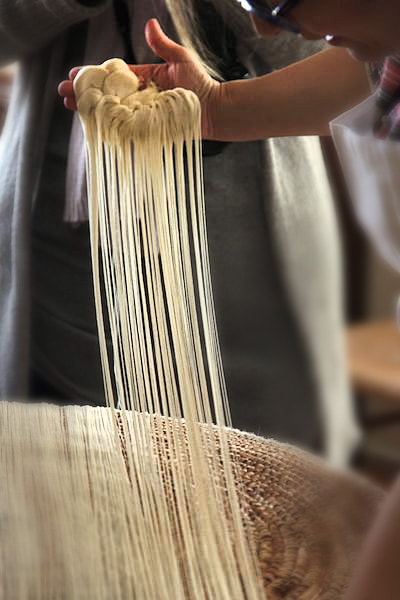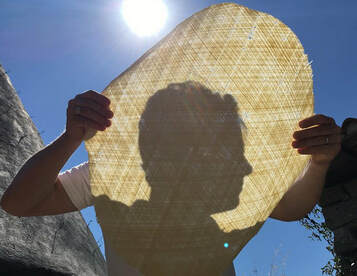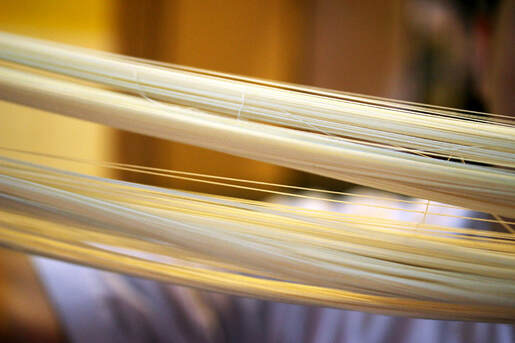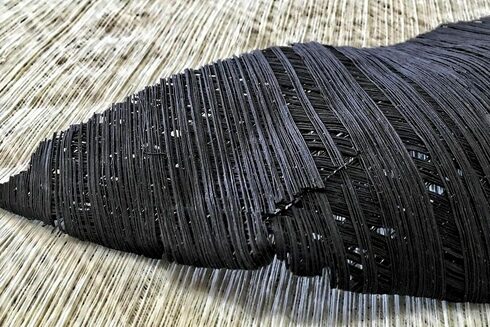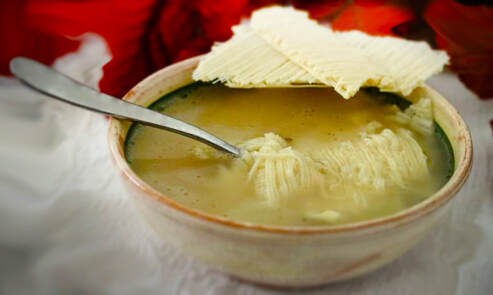By: Jerry Finzi, Grand Voyage Italy
In the small Sardinian town of Nuoro, there are very few people who still know how to make what many say is the rarest type of pasta in Italy and perhaps the whole world…
Su filindeu (in Sardinian dialect), and in Italian, Fili di Dio, can be translated as either wires, yarns or threads of God. You might think of this pasta as the elevated and rarer version of angel hair pasta.
Filindeu is tied to a religious ritual celebrated in the town of Lula. La Festa di San Francesco is held on May 1 at the Chiesa della Solitudine di Nuoro.
Oddly, this celebration is tied to a killing in the year 800 AD. Accused of murder and being hunted down for his crime, a young man claimed innocence and took refuge in a cave about 15 miles from Nuoro.
He was discovered, brought to trial and miraculously (to him) declared innocent. He had prayed to Saint Francis during his time of refuge in the cave and thus built a shrine to honor his patron saint. In autumn on Oct. 4, there is a second procession to the cave and shrine followed by a celebratory feast of filindeu.
The dough to make this special pasta is durum semolina, water and a bit of salt, without leavening. It is then kneaded for a very long time to stretch the gluten, making it very soft with amazing elasticity–the key to making the long strands.
The dough is rolled by hand into 8 long, thin snakes, which are folded, halved and pulled, only to be folded and stretched again–32 times in total–resulting in 256 thread-like thin bundles of parallel groups of pasta.
These threads are then stretched across a large, flat tray called a fundu, traditionally woven from leaves of the local asphodel plant (a member of the lily family), often used in basket-making. To aide in the stretching, the dough is occasionally dipped in salt water–the timing of this sensed only by the experience of the artisan making the pasta.
For the feast, the filindeu is broken into pieces and put in boiling mutton broth. Grated pecorino (sheep) cheese is added to complete the soup. I don’t know about you, but I’ve always loved my soup loaded with noodles–perfect for when the cold weather hits.
Watch how it’s done, here:
If you’re ever in Sardinia, look for packages of filindeu shards. Some have realized that this is a real Sardinian treasure and are trying to expand the availability of this pasta.
Sadly, this unique pasta technique is in danger of becoming extinct.
Filindeu maker Paula Abriani was so concerned about the rare technique, that she went to the local government to see if there was some money to open a school. There wasn’t. Then she tried to teach young locals to make it in her home–they got discouraged with its complexity and gave up.
Luckily, she was invited to Rome by the gourmet magazine Gambero Rosso, so they could film her techniques for posterity. She has also started making filindeu for several restaurants who serve her amazing pasta to clients from around the world. The preservation of the tradition is looking a bit brighter!
If you’re traveling to Nuoro, search out the women who still make this pasta for a lesson on how it’s done. They have learned the skill from their mothers, who learned it from their mothers and so on, going back 300 years. Ask, plead or beg for a lesson from either Paola Abraini, Salvatora Pisano or Grazia Selis.
If you’re lucky enough to get a little lesson from them, don’t forget to say “thank you” in Sarda, the Sardinian dialect… grazie meda! And give them a solemn promise that you will pass along their skills.


